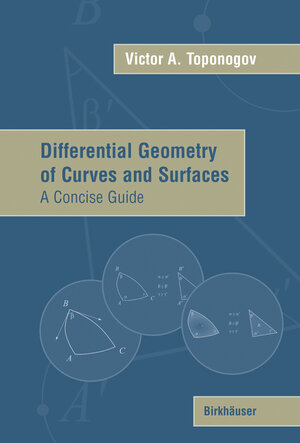
×
![Buchcover ISBN 9780817644024]()
From the reviews:„This book by the late author covers … the subjects which are normally taught in a course on the differential geometry of curves and surfaces. … It can be recommended for first-year graduate students and also for use in the classroom. … the book is rich in geometry and concrete examples. … the book is very welcome since it is an original contribution in various aspects and gives a number of geometric insights … . Numerous illustrations make the reading enjoyable.“ (Wolfgang Kühnel, Mathematical Reviews, Issue 2006 m)„Toponogov’s ‘concise guide’ to elementary differential geometry has the potential to be a useful reference and/or review book … .“(Fernando Q. Gouvèa, MathDL, March, 2006)“This book, written by one of the Russian masters, offers a comprehensive introduction to classical differential geometry of curves and surfaces. Only a basic background in analysis and linear algebra is needed to follow the presentation. … A distinctive feature of the book is that, apart from a large number of exercises, it also contains many original problems with outlines of solutions.” (A. Cap, Monatshefte für Mathematik, Vol. 155 (1), September, 2008)
This concise guide to the differential geometry of curves and surfaces can be recommended to ? rst-year graduate students, strong senior students, and students specializing in geometry. The material is given in two parallel streams. The ? rst stream contains the standard theoretical material on differential ge- etry of curves and surfaces. It contains a small number of exercises and simple problems of a local nature. It includes the whole of Chapter 1 except for the pr- lems (Sections 1.5, 1.7, 1.10) and Section 1.11, about the phase length of a curve, and the whole of Chapter 2 except for Section 2.6, about classes of surfaces, T- orems 2.8.1–2.8.4, the problems (Sections 2.7.4, 2.8.3) and the appendix (S- tion 2.9). The second stream contains more dif? cult and additional material and for- lations of some complicated but important theorems, for example, a proof of A. D. Aleksandrov’s comparison theorem about the angles of a triangle on a convex 1 surface, formulations of A. V. Pogorelov’s theorem about rigidity of convex s- faces, and S. N. Bernstein’s theorem about saddle surfaces. In the last case, the formulations are discussed in detail. A distinctive feature of the book is a large collection (80 to 90) ofnonstandard andoriginalproblems that introduce the student into the real world of geometry.



